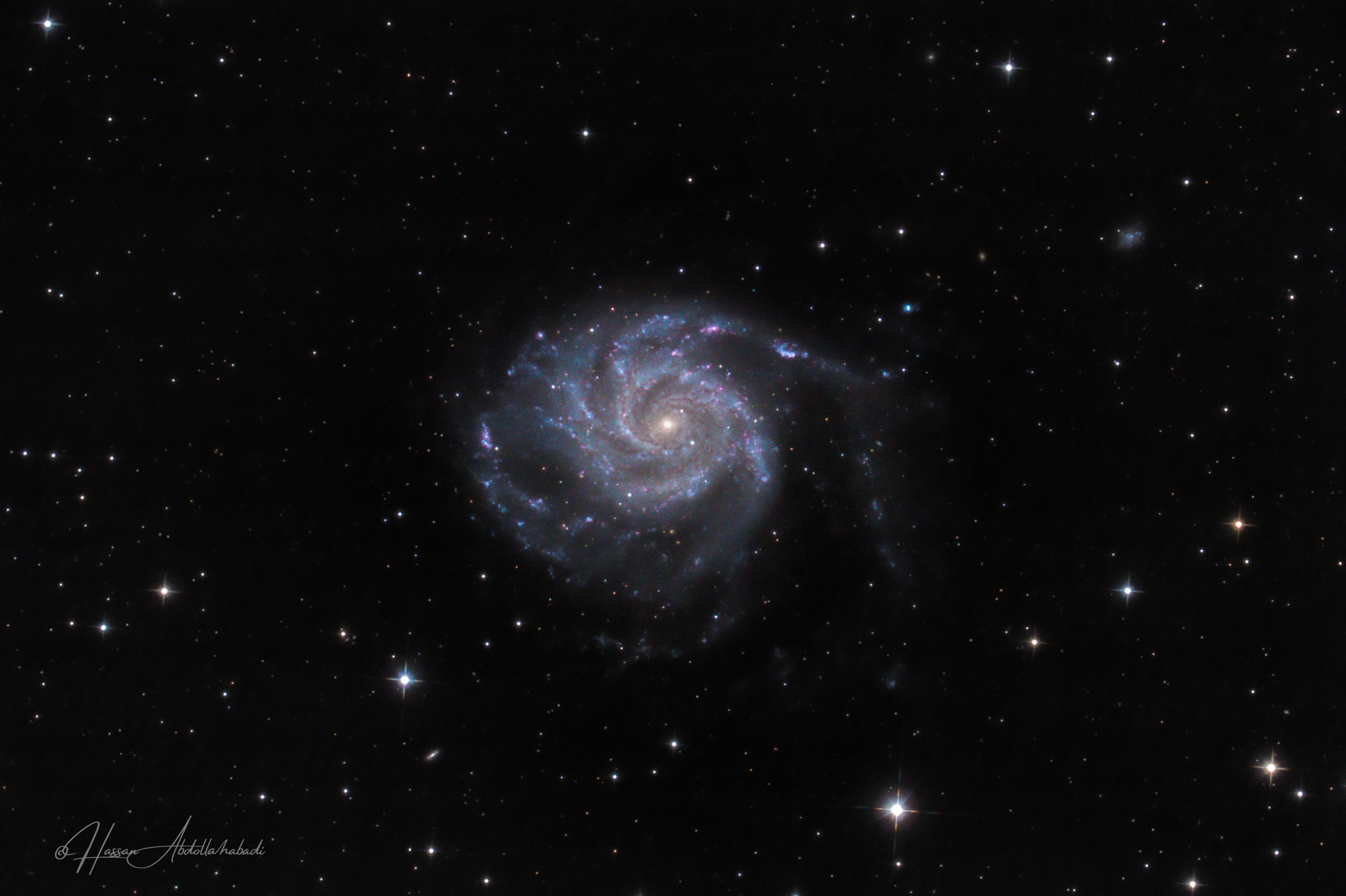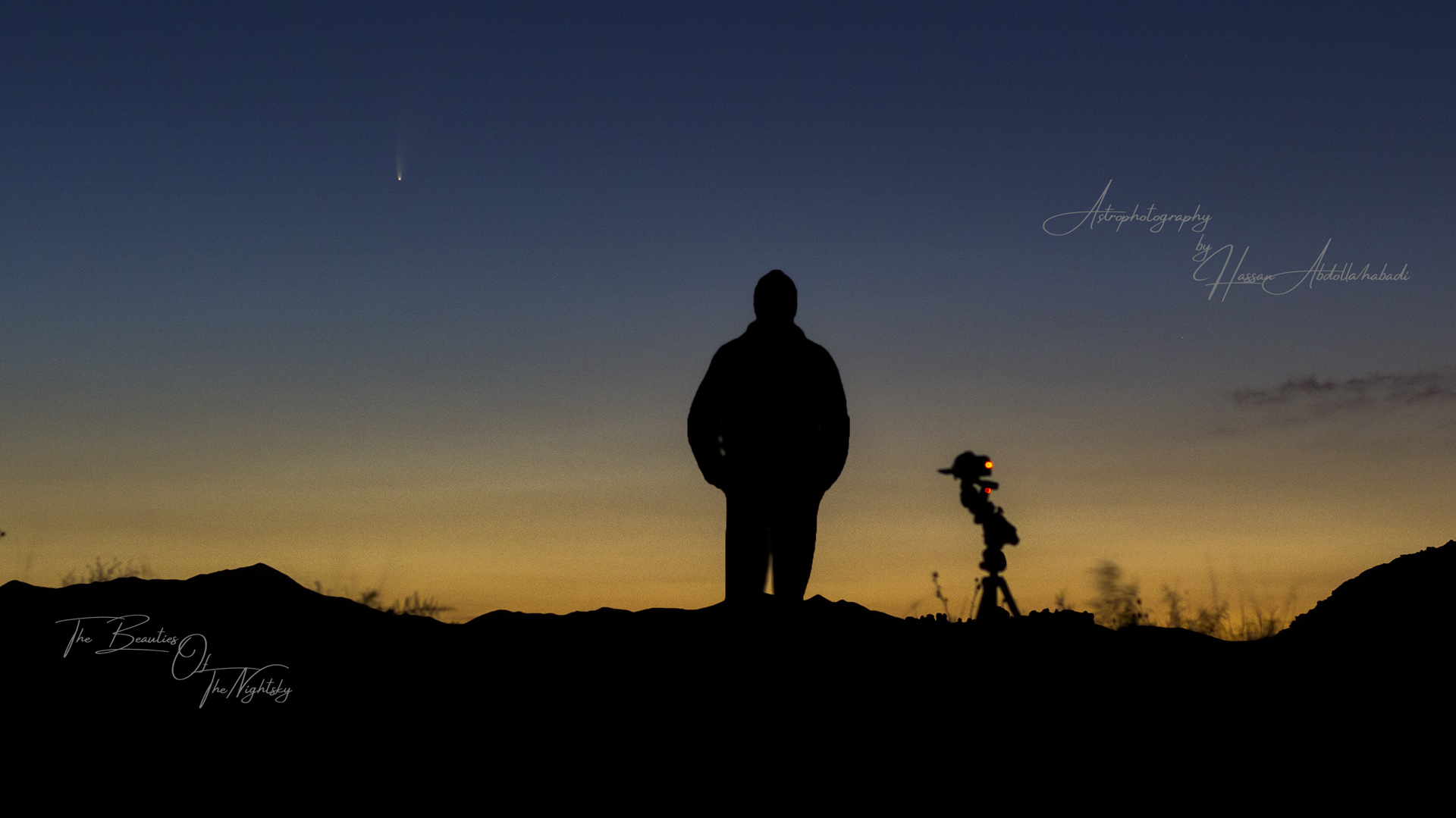
Why do many galaxies appear as spirals?
A striking example is M101
Big, beautiful spiral galaxy M101 is one of the last entries in Charles Messier’s famous catalog
About 170,000 light-years across, this galaxy is enormous, almost twice the size of our own Milky Way galaxy.
The foreground stars are in the Milky Way galaxy
Its core is dominated by light from cool yellowish stars.
Also known as the Pinwheel Galaxy, M101 lies within the boundaries of the northern constellation Ursa Major, about 23 million light-years away.
Type : Spiral Galaxy
Optic : GSO 8” RC F/8 With Astro Physics 0.67x Focal Reducer
Focal Length : 1072 mm
Mount : Sky-Watcher AZ-EQ6
Camera : Canon EOS60D modified
ISO : 2000
Filters : –
Guide Scope : ASI 224 MC , PHD Guiding
Total EXP : 200 min (40*5 Min)
Technique used : –
Dark : Yes
Flat : Yes
Bias : Yes
Dark Flat : Yes
Software: DeepSky Stacker , PixInsight , Photoshop
Date Taken : 5 June 2019
Place : Akbar Abad Village , Rivash , Iran
کهکشان فرفره
چرا بسیاری از کهکشان ها به صورت مارپیچ ظاهر می شوند؟
نمونه بارز آن مسیه 101 هست
یکی از آخرین ورودی های کاتالوگ معروف چارلز مسیه کهکشان مارپیچی بزرگ و زیبای فرفره است
عرض این کهکشان در حدود 170 هزار سال نوری است ، تقریباً دو برابر کهکشان راه شیری
ستارگان پیش زمینه در کهکشان راه شیری قرار دارند
هسته آن تحت تأثیر نور ستاره های مایل به زرد خنک است
این کهکشان زیبا ، در مرزهای صورت فلکی شمالی خرس بزرگ ، حدود 23 میلیون سال نوری از ما فاصله دارد
خرداد ۱۳۹۸
